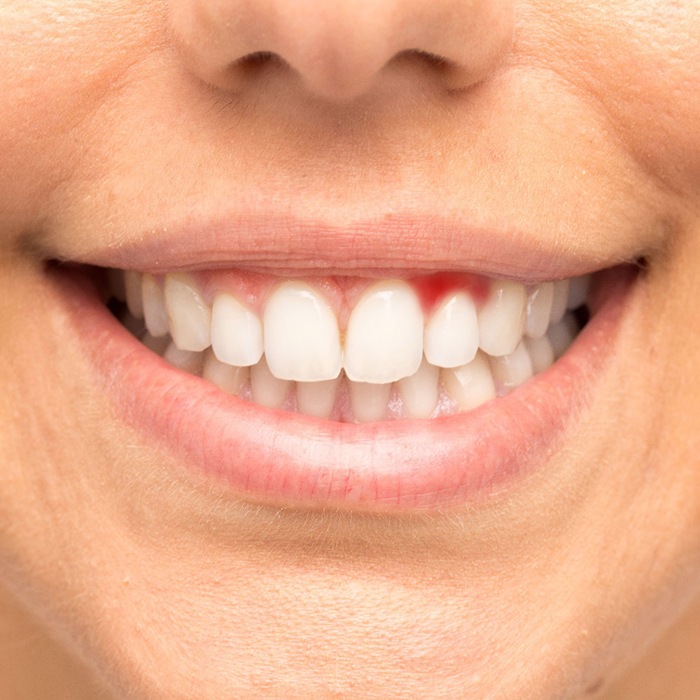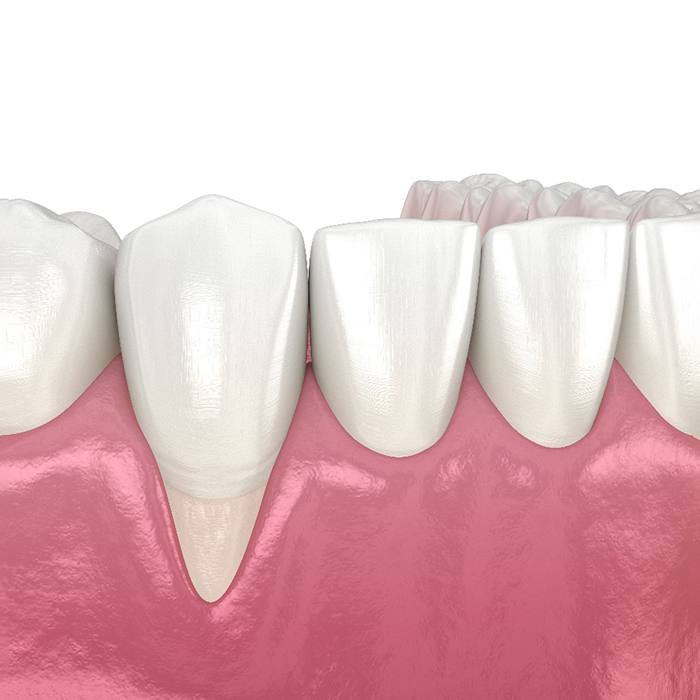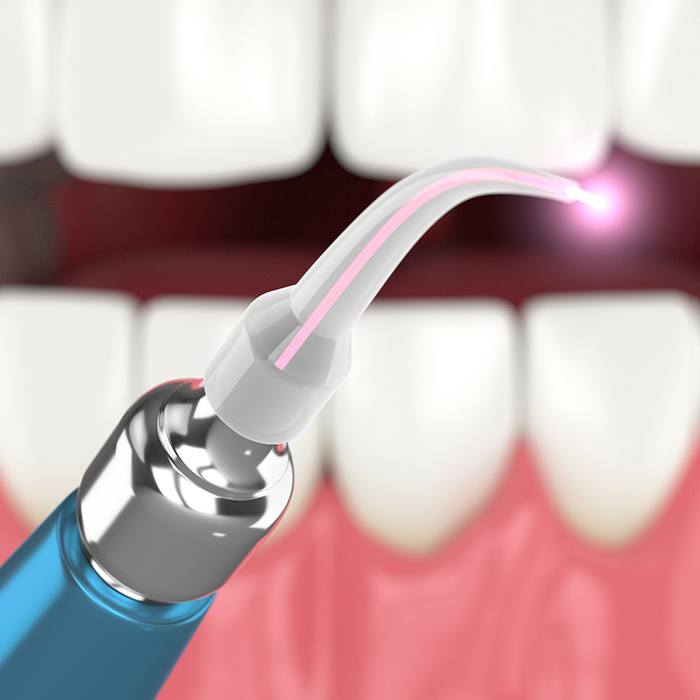Our dental office is less than five minutes west of the intersection of I-30 and 360, just north of Hurricane Harbor and Six Flags. We’re also only minutes away from Peach Elementary and Nicholas Junior High School.
Gum Disease Treatment – Arlington, TX
Don’t Let Gum Disease Cost You Your Smile
Gum disease that has been ignored for too long can ultimately result in tooth loss. In order to avoid this frightening outcome, you should take steps to have gum disease treated before it leads to any lasting damage. To that end, we recommend that you give us a call as soon as you notice any concerning symptoms such as bleeding gums. Dr. Namineni can create a personalized periodontal treatment plan that improves your oral health and prevents gum disease from advancing further.
Why Choose Sonria Dentista of Arlington for Gum Disease Treatment?
- State-of-the-Art Laser Treatments
- Caring Bilingual Team
- Practice That Accepts Medicaid
What is Gum Disease?

Having gum disease means that the tissues responsible for supporting your teeth have become infected. The first stage of gum disease is gingivitis, which has relatively mild symptoms and can sometimes be reversed simply through improved oral hygiene habits. However, untreated gingivitis can eventually turn into periodontitis. Not only can periodontitis have severe consequences for your oral and overall health, but there’s no way to fully cure it; the only option remaining is to manage it.
Symptoms of Gum Disease

Our team can check for signs of gum disease during your next checkup, but there are some symptoms that you may be able to notice on your own, such as:
- Gums that are redder or more swollen than usual.
- Bleeding that occurs when you brush or floss.
- Teeth that look longer (which is often a side effect of gum recession).
- A change in the way the teeth fit together.
- Permanent teeth that have come loose.
How Do We Treat Gum Disease?

The type of treatment that we recommend for gum disease will vary depending on how severe your condition currently is. Once we have completed an examination of your mouth, we will walk you through your options and explain which approach is the best fit for your situation.
Scaling & Root Planing

In many cases, gum disease can be treated with a two-part deep cleaning that consists of scaling and root planing. Scaling involves getting rid of plaque and tartar around and below the gumline in order to reduce the level of harmful bacteria in the mouth. Then root planing is performed to smooth out the surfaces of the tooth roots; this step encourages the gums to reattach to the teeth.
Antibiotic Treatment

Antibiotics may be prescribed along with scaling and root planing. Even after a deep cleaning, there might still be some bacteria in your mouth, and antibiotics are often the best option for fighting them. Our team can explain the specifics of the antibiotics chosen for your case and explain if there are any special instructions that need to be followed.
Laser Periodontal Treatment

Nowadays, more and more dentists are using soft tissue lasers to treat gum disease. Not only can the laser eliminate much of the bacteria responsible for causing gum disease, but it can also be used to remove the damaged parts of the gums while leaving the healthy tissue alone.


